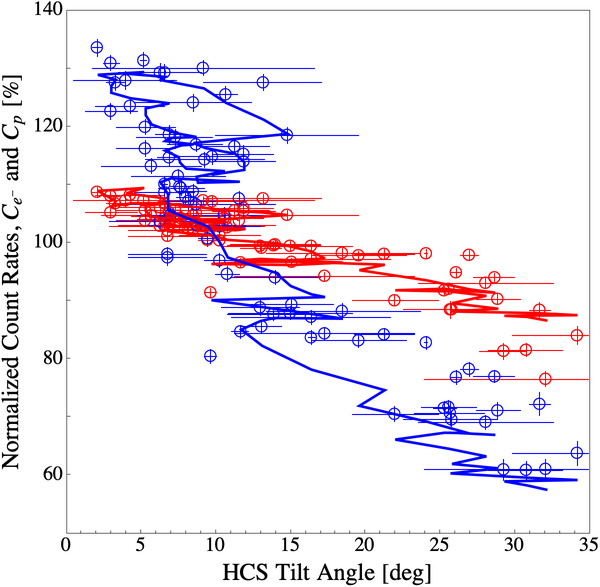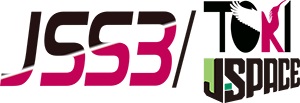Numerical study on the solar modulation of low-energy cosmic rays measured with CALET
JAXA Supercomputer System Annual Report February 2023-January 2024
Report Number: R23EACA51
Subject Category: JSS Inter-University Research
- Responsible Representative: Shoko Miyake, Associate Professor, National Institute of Technology (KOSEN), Ibaraki College
- Contact Information: Shoko Miyake(s.miyake@gifu-nct.ac.jp)
- Members: Shoko Miyake
Abstract
We reveal the solar modulation of the galactic cosmic ray that is the relationship between the solar activity and the variation of the flux of low-energy particles, performing the numerical calculation of the cosmic-ray propagation in the heliosphere and the magnetosphere.
Reference URL
N/A
Reasons and benefits of using JAXA Supercomputer System
This project needs a large amount of computational resources for the following two reasons: We have to calculate the cutoff rigidity for each event measured by CALET.; We need to iteratively calculate and be compared with observations to find the best solar modulation model that reproduce the observations.
Achievements of the Year
We have obtained the following results by performing a calculation of the effective cutoff rigidity for the analysis of low-energy electron and proton events observed by the CALorimetric Electron Telescope (CALET) and a numerical calculation of the modulation of the galactic cosmic ray (GCR), as before.
From the variation of the count rates of electrons and protons observed by CALET up to the end of May 2021, we have found the charge-sign dependence of the cosmic-ray modulation and the hysteresis effect in the correlation with the tilt angle of the heliospheric current sheet (HCS). Blue and red dots in Figure 1 show the time profiles of the normalized count rates of electrons and protons with an average rigidity of 3.8 GV observed by CALET. From Figure 1, we see that the variation of the count rate of electrons is clearly larger than that of protons at the same average rigidity. Figure 2 shows the correlation between the count rates of electrons and protons and the HCS tilt angle. It can be seen that the maxima of the count rates of electrons and protons are delayed with respect to the minimum value of the HCS tilt angle, creating a hysteresis structure. We then succeeded in reproducing the charge-sign dependence and the hysteresis structure observed by CALET with a numerical drift model of the GCR transport in the heliosphere, as shown in the red and blue solid curves in Figure 1 and Figure 2. These results, which imply that the drift effect plays an important role in long-term variations in the cosmic-ray modulation, were published in Physical Review Letters (O. Adriani et al. (CALET Collaboration), PRL, 130, 2023 ).
Analysis of the latest observed data and these theoretical interpretations using a numerical cosmic-ray drift model are also underway. In this fiscal year, we have analyzed observed data up to the end of April 2023 and obtained useful tools for further developing a numerical model of the cosmic-ray modulation, such as a rigidity dependence of the cosmic-ray modulation and the correlation with the HCS tilt angle, sunspot number, the heliospheric magnetic field strength, and the solar wind speed. Comparisons with the numerical drift models and refinement of the model are also underway, and further progress is expected in both observational and theoretical aspects.

Fig.1: Time profile of normalized count rates of electrons (blue open circle) and protons (red open circle) observed by CALET up to May 2021. The blue and red curves show the electron and proton count rates reproduced by the numerical model, respectively.

Fig.2: Correlation plot between the normalized count rates and the HCS tilt angle. Blue (red) open circles show the correlation of the observed electron (proton) count rate, respectively, while blue and red solid curves display correlations reproduced by the numerical model.
Publications
– Peer-reviewed papers
1) O. Adriani,Y. Akaike,K. Asano,Y. Asaoka,E. Berti, …, S. Miyake, …,W. V. Zober, “Charge-Sign Dependent Cosmic-Ray Modulation Observed with the Calorimetric Electron Telescope on the International Space Station”, Physical Review Letters, 130(21), 211001, 2023 [Erratum 131, 109902 (2023)].
– Non peer-reviewed papers
1) S. Miyake, on behalf of the CALET Collaboration, “Cosmic-Ray Modulation during Solar Cycles 24-25 Transition Observed with CALET on the International Space Station”, Proceedings of 38th International Cosmic Ray Conference – PoS(ICRC2023), 444, 1253, 2023.
– Invited Presentations
1) S. Miyake, K. Munakata, Y. Akaike, S. Torii, for the CALET Collaboration, “Study of the CR propagation in the heliosphere: Latest observation results and its theoretical understanding”, Workshop of Civilizations, global environment, solar system, and galaxies connected by cosmic rays 2023, Sendai, Sep. 2023.
2) S. Miyake, K. Munakata, Y. Akaike, for the CALET Collaboration, “Modeling the solar modulation of galactic cosmic rays based on the latest observation results by CALET on the International Space Station”, AGU Fall Meeting 2023, San Francisco, Dec. 2023.
– Oral Presentations
1) S. Miyake, K. Munakata, Y. Akaike, S. Torii, for the CALET Collaboration, “Study of the CR propagation in the heliosphere: Latest observation results and its theoretical understanding”, Workshop of Civilizations, global environment, solar system, and galaxies connected by cosmic rays 2023, Sendai, Sep. 2023.
2) S. Miyake, K. Munakata, R. Kataoka, C. Kato, S. Torii, S. Nakahira, T. Terasawa, Y. Akaike, K. Kobayashi, for the CALET Collaboration, “Theoretical research on the solar modulation during solar cycles 24-25 transition observed with CALET”, 78th JPS Annual meeting, Sendai, Sep. 2023.
– Poster Presentations
1) Shoko Miyake, Kazuoki Munakata, Yosui Akaike, for the CALET Collaboration, “Cosmic-Ray Modulation during Solar Cycles 24-25 Transition Observed with CALET on the International Space Station”, 38th International Cosmic Ray Conference (ICRC 2023), Nagoya, Aug. 2023.
2) S. Miyake, K. Munakata, Y. Akaike, for the CALET Collaboration, “Modeling the solar modulation of galactic cosmic rays based on the latest observation results by CALET on the International Space Station”, AGU Fall Meeting 2023, San Francisco, Dec. 2023.
Usage of JSS
Computational Information
- Process Parallelization Methods: N/A
- Thread Parallelization Methods: OpenMP
- Number of Processes: 1
- Elapsed Time per Case: 24 Hour(s)
JSS3 Resources Used
Fraction of Usage in Total Resources*1(%): 0.09
Details
Please refer to System Configuration of JSS3 for the system configuration and major specifications of JSS3.
| System Name | CPU Resources Used(Core x Hours) | Fraction of Usage*2(%) |
|---|---|---|
| TOKI-SORA | 0.00 | 0.00 |
| TOKI-ST | 697904.32 | 0.75 |
| TOKI-GP | 0.00 | 0.00 |
| TOKI-XM | 0.00 | 0.00 |
| TOKI-LM | 0.00 | 0.00 |
| TOKI-TST | 0.00 | 0.00 |
| TOKI-TGP | 0.00 | 0.00 |
| TOKI-TLM | 0.00 | 0.00 |
| File System Name | Storage Assigned(GiB) | Fraction of Usage*2(%) |
|---|---|---|
| /home | 0.00 | 0.00 |
| /data and /data2 | 0.00 | 0.00 |
| /ssd | 0.00 | 0.00 |
| Archiver Name | Storage Used(TiB) | Fraction of Usage*2(%) |
|---|---|---|
| J-SPACE | 0.00 | 0.00 |
*1: Fraction of Usage in Total Resources: Weighted average of three resource types (Computing, File System, and Archiver).
*2: Fraction of Usage:Percentage of usage relative to each resource used in one year.
ISV Software Licenses Used
| ISV Software Licenses Used(Hours) | Fraction of Usage*2(%) | |
|---|---|---|
| ISV Software Licenses(Total) | 0.00 | 0.00 |
*2: Fraction of Usage:Percentage of usage relative to each resource used in one year.
JAXA Supercomputer System Annual Report February 2023-January 2024


